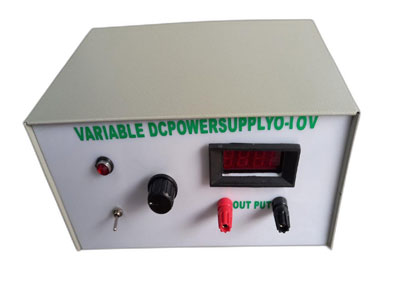Key Takeaway
To find your power supply wattage, check the label or documentation that came with it. The wattage information is usually printed on the PSU itself. If you can’t find it, use online PSU calculators. Enter your computer components’ details to estimate the wattage. Another option is to open your computer case and look directly at the PSU. The wattage should be clearly labeled on the unit. Knowing your power supply wattage is crucial for ensuring your system has enough power for all its components.
Definition and Importance
Understanding power supply wattage is crucial for efficient and safe industrial equipment operation. Wattage measures the electrical power consumed by devices, impacting performance and longevity. A weak power supply can cause malfunctions, while an overly strong one leads to unnecessary energy use. Proper wattage knowledge aids in equipment selection and maintenance, preventing operational issues and reducing costs. In industrial applications, correct wattage ensures optimal machine and tool performance, avoiding overheating, equipment failure, and inefficiency. Thus, understanding and monitoring power supply wattage is fundamental for industrial efficiency and safety.

Tools for Measurement
When measuring power supply wattage, selecting the right tools is crucial. A wattmeter is the primary device used to measure power consumption. It offers direct readings and is straightforward to use, making it ideal for both routine checks and detailed analysis. Clamp meters and multimeters also play vital roles. Clamp meters are excellent for measuring current without direct contact, which is particularly useful for live circuits. Multimeters provide versatility, capable of measuring voltage, current, and resistance, which makes them indispensable for comprehensive electrical testing. In industrial applications, these tools are essential for routine maintenance and troubleshooting, ensuring that machinery operates efficiently and safely.
Using these tools correctly is key to obtaining accurate readings. Proper measurement techniques help in diagnosing issues before they escalate, thus maintaining optimal performance and avoiding costly downtime. Each tool has its advantages, and choosing the right one depends on the specific requirements of your task. For example, a wattmeter is perfect for overall power consumption measurement, while a clamp meter can quickly check current flow in a conductor. Multimeters, with their multifunction capabilities, are useful for detailed diagnostics. Understanding how to use these tools effectively will enhance your ability to maintain and troubleshoot industrial equipment.
Step-by-Step Guide
Accurate wattage measurement involves several critical steps. First, ensure that all equipment is powered down to avoid electrical hazards. Next, select the appropriate tool based on your needs—whether it’s a wattmeter for direct power readings, a clamp meter for non-intrusive current measurement, or a multimeter for versatile electrical testing. Once you have the right tool, connect it correctly: plug a wattmeter into the power source, clamp the meter around a live wire, or set the multimeter to the appropriate mode and connect the probes.
After connecting the meter, power on the equipment you are measuring. Observe the wattage displayed on your measuring tool and record the data for analysis and future reference. This step-by-step process ensures that you obtain accurate wattage measurements, which are crucial for maintaining equipment efficiency and safety. Consistent monitoring helps detect anomalies early, preventing potential breakdowns. Regular measurement and data recording form the foundation of effective maintenance practices, enabling you to maintain the performance and reliability of your industrial machinery.
Interpreting the Results
Interpreting wattage readings is a critical skill in industrial maintenance. The goal is to determine whether equipment is operating within its specified power range. Compare the measured wattage with the manufacturer’s specifications to ensure everything is running correctly. High wattage readings might indicate overloading or inefficiencies, leading to excessive energy consumption and potential overheating. On the other hand, low wattage could signal insufficient power, affecting performance and reliability.
Understanding these readings allows you to make informed decisions about equipment maintenance and upgrades. For instance, consistently high wattage may necessitate a review of the power supply system to identify and mitigate inefficiencies. Conversely, low wattage readings might require adjustments to ensure the equipment receives adequate power. In industrial applications, accurate interpretation of wattage readings is essential for optimizing energy use and ensuring machinery longevity. Regular monitoring and analysis help in identifying trends and preventing costly downtime, thereby enhancing operational efficiency and safety.
Common Issues and Solutions
Several common issues can affect power supply wattage, including overloading, underpowering, and fluctuating readings. Overloading occurs when the power supply cannot handle the equipment’s demand, leading to overheating and potential damage. Underpowering results in poor performance and may cause devices to malfunction. Fluctuating wattage readings often indicate unstable power sources or faulty wiring.
To resolve these issues, ensure that your power supply matches the equipment’s requirements. Regularly inspect and maintain your electrical systems to prevent and address problems. For instance, if you notice fluctuating readings, check for loose connections or damaged wiring. Overloading can be mitigated by distributing the power load more evenly or upgrading the power supply. Underpowering issues might be resolved by ensuring the equipment receives sufficient voltage and current.
In industrial settings, addressing these common issues is crucial for maintaining operational efficiency and safety. Proper troubleshooting and timely interventions significantly enhance the reliability and performance of your machinery. Regular inspections and proactive maintenance can prevent many problems, ensuring that your equipment operates smoothly and efficiently. This approach not only extends the lifespan of your machinery but also minimizes downtime and associated costs, contributing to overall productivity and profitability.
Conclusion
Determining your power supply wattage is vital for the efficient and safe operation of industrial equipment. By understanding the importance of wattage, using the right measurement tools, and following a systematic approach, you can ensure that your machinery operates within optimal parameters. Accurate wattage measurement and interpretation help in maintaining equipment performance, reducing energy consumption, and preventing potential issues.
Regular monitoring and addressing common wattage-related problems are key to sustaining industrial efficiency and safety. Ensuring that your power supply is adequate and stable can lead to better operational outcomes and longevity of your equipment.
